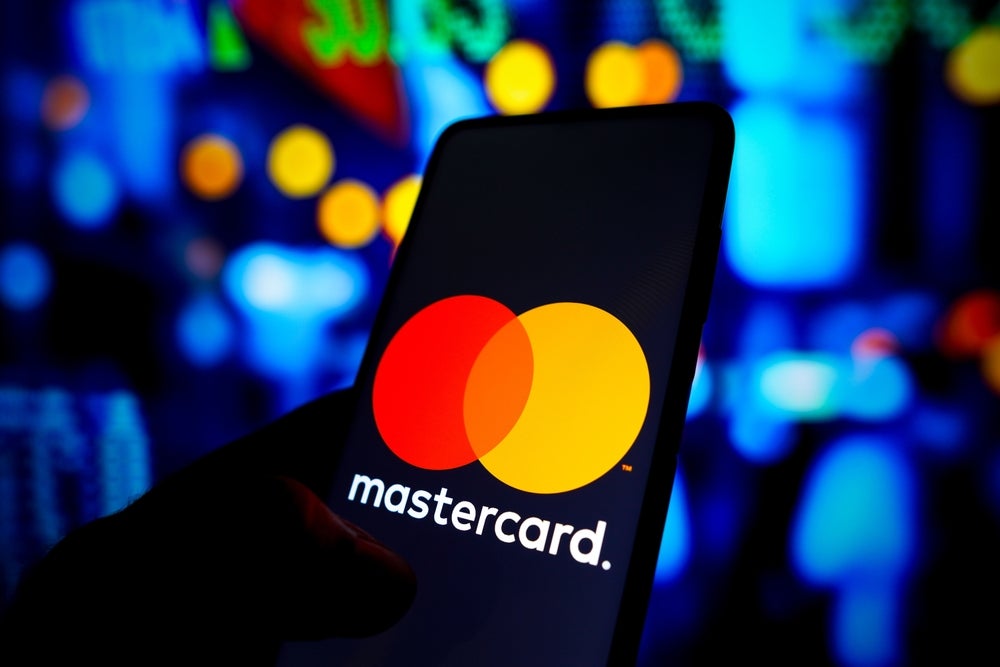Cards International has approached experts in the cards and payments industry to put forward their thoughts on how cards will change this year? Will the contactless boom continue? Will cards overtake cash? How will security systems improve? How can card companies improve customer trust?
Travers Clarke-Walker, Chief Marketing Officer, International Group, Fiserv
The past year has seen a number of changes in the UK retail banking sector with highlights like the increasing uptake of new technologies, such as contactless payments, and the launch of new challenger banks. In 2016, we can expect to see the disruption of the financial services industry continue as new players enter the system and begin to seek customers by offering innovative approaches to financial services.
The rise of alternative finance options
Recent Fiserv research conducted in partnership with the Centre for Economics and Business Research (Cebr) highlights the coming shifts in the industry. Since the global financial crisis, small and medium enterprises (SMEs) have been challenged to find funding to fuel their business growth. Today, alternative financing options such as peer-to-business (P2B) lending and crowd-funding are rapidly becoming popular to cater to the growing demand. These sources of alternative finance are projected to be worth £12.3bn ($17.5bn) a year by 2020 in the UK. Additionally, the research found that UK credit union assets are projected to hit £2.2bn by 2020, supporting an estimated £1.3bn in loans to members.
As alternatives to conventional sources of finance emerge and become more well-known, we can expect to see accelerated uptake of these services, be they based around P2B, crowdfunding options or credit unions. For all financial institutions, there will be a significant opportunity to innovate with their own new products or to partner with start-ups and alternative lenders.
Starting your own bank
It’s all very well to offer projections of growth of new businesses in the financial services industry, but how easy is it to actually embark on building your own bank?
The answer is that in some ways, it is easier than ever to start a bank, and we can expect to see more launches in 2016. Two developments are having a positive impact: George Osborne’s recent vow to increase retail banking competition by issuing 15 new banking licenses in the next five years, and the UK Competition and Markets Authority (CMA) investigation into the retail banking services available to small and medium enterprises (SMEs) and consumers.
How well do you really know your competitors?
Access the most comprehensive Company Profiles on the market, powered by GlobalData. Save hours of research. Gain competitive edge.

Thank you!
Your download email will arrive shortly
Not ready to buy yet? Download a free sample
We are confident about the unique quality of our Company Profiles. However, we want you to make the most beneficial decision for your business, so we offer a free sample that you can download by submitting the below form
By GlobalDataIf you match this with the amount of growth happening in the fintech sector, there is an optimistic outlook for UK banking and opportunities for new market entrants, provided they ensure that they take factors such as market trends, regulations, opportunities for collaboration and technological innovation into account.
Tapping into innovation
The fintech sector is increasingly driving the disruption of the financial services market. Start-ups are the key players here, but the issue for financial institutions is how to tap into the ecosystem of rapid innovation and change that exists within the start-up community. Financial institutions are often held back by rigorous procurement processes and compliance requirements that hinder or prevent contracts being drawn up.
It is here that larger technology companies that know both the start-up industry and have the scale and knowledge to work with banks can come into their own. Large fintech players could operate as a kind of app store, offering curated access to the latest technologies as they become available, rapidly delivering innovative products to large numbers of consumers.
2016 and beyond
Fundamentally, the next few years will continue to be exciting for the financial services industry. New technologies and changing customer demands will alter the face of the industry, with established banks rubbing shoulders with nimble, smaller providers offering specialist services to businesses and consumers. For those that can adapt quickly, the prize will be increased customer engagement and a place at the forefront of a revitalised industry.
Narayan Sivaram, VP and Regional Head of Cards and Payments, Infosys
Cash will still have a significant role to play in 2016
Money printer De La Rue has cut its global banknote production by two billion notes a year. Smart payment methods like contactless cards and Apple Pay are growing rapidly in popularity. Nonetheless, cash will not become extinct in 2016. The equivalent of trillions of pounds of cash is still in circulation across the world. According to Payments UK, over 18 billion cash payments were made in the UK alone during 2014. This represented 53% of all transactions. With this in mind, there will have to be a seismic shift for customers to go completely cashless in 2016. However, this will not stop the creep towards cashless payments. Some 74.5 million contactless cards are in circulation in the UK, 41% up on last year with no signs growth will slow down.
Growth in customers and their satisfaction will be a major priority for payment providers
Commissioned by Infosys, a recent report on the state of payments showed that 69% of providers see gaining new customers as a priority for their digital strategies heading into 2016. In addition, 35% stated that increasing customer satisfaction was a priority and 40% are seeking to create a unified experience for customers. Digital technologies will help with this; 37% of providers surveyed said that they will be using them to better understand customer dynamics whilst 40% are using them to create faster transactions.
Companies will invest in cashless payment technologies to encourage customer trust
In 2016, security and trust will be high on the agenda for payment providers. As providers seek to fulfil their objective of gaining new customers, they will also invest in fraud prevention. This will be especially important as contactless payments can leave users open to fraud, as shown by Which. Therefore, in 2016 it will be important for providers to secure customer trust by investing in technologies which protect them from losing money to fraudsters. As they seek to gain trust, payment providers will also look to other innovative ways to protect consumers. According to the cards and payments report commissioned by Infosys, almost a third said they plan to invest in biometric authentication systems whilst 37% saw data-driven analytics as a way forward for fraud management.
Digital commerce will lead the way in terms of electronic payments
Emerging payment acceptance form factors (the Internet of Things, smartphones, wearables), wallets (Apple Pay, Android Pay, Samsung Pay, PayPal, Merchant Customer Exchange [MCX] and the need to secure payments from fraud are forcing merchants to move to a more flexible and modern architecture. Yet business-to-business (B2B) payments are currently lagging behind their consumer counterparts. Almost two thirds of payments are still paper based, according to Infosys’ report. In 2016, B2B payment providers will start to take the lead from e-commerce vendors to drive the digitalisation of B2B transactions. They will incentivise digital payments and develop new revenue-generating systems for liquidity management and financial supply chain integration. This will drive end-to-end automation and create efficiency savings.
John Cooke, Commercial of Director Card Services, allpay Limited
Change in payments is usually very slow. For example, contactless has been around since 2008 and it’s still not accepted in most supermarkets. This will change in 2016 as most have now rolled out compatible readers. In fact, all debit cards should be contactless by the end of the year. Credit and prepaid cards are likely to follow in order to keep up with modern requirements.
Mobile contactless payments will grow. But judging by current implementations (which are slower and less continent than using a card) this will take place gradually.
Long distance rail travel won’t transition to contactless bank cards any time soon, despite being ideally suited for this use. The current standards will not support the transition and a national rail settlement body that could act as a payments processor would be required to distribute funds to the relevant rail operating company.
China Union Pay will enter the UK market and will offer lower costs than established players.
John Sharman, CEO, Tuxedo Money Solutions
Prepaid card usage varies across Europe. Italy currently leads the way and has the highest growth prospects both in terms of transaction value and volume of cards in issue. Conversely, the Austrian prepaid market is in its infancy, and in Germany 80% of all consumer transactions are conducted in cash.
Examining the Middle East’s payment market, notes and coins are very much in favour. In the United Arab Emirates, cash is the top payment method in 10 out of 12 purchase categories, ranging from groceries to school fees.
The need for an alternative method of paying for goods and services abroad has paved the way for new ‘cashless’ options, which has prompted further advancements in prepaid payment technologies.
In the near future, kiosks will be available at airports, allowing visitors to purchase a prepaid currency card on arrival – offering travellers a more favourable option to using their credit or debit cards while on holiday.
With Dubai beginning to set the pace in innovative payment technology, we can expect other nations to follow suit in 2016, transforming the way in which people spend money and answering a need for speed, flexibility and security in payments.
Todd Freyman, Vice President (The Americas), Bell ID
2015 was a year of change for the payments industry in the US. The liability shift has now taken place but there is still a great deal of work to be done.
Banks that have already deployed EMV will look towards improving the EMV transaction experience, U.S. Common Debit AID and contactless issuance next year, while those in the midst of migration will make decisions on whether to deploy contactless right away.
We’ll also start to see more banks implementing more of the technology themselves, having initially set up hosted services with the processors. This will bring greater control, efficiency and autonomy.
Building on this in the US and across the Americas region, card-not-present (CNP), mobile payments and tokenisation will come to the fore in 2016.
The OEMs and banks are talking about value-added services and, with the importance of couponing and loyalty in the States, this is going to drive significant consumer adoption by enabling new efficiencies and convenience at checkout for consumers.
For issuers, the banking consortiums and domestic debit schemes are already sourcing solutions for the benefit of their member banks and tokenisation will be the big priority as banks seek to control their own security and flexibility to support new product offerings.
Finally, on the acquirer side, banks will also start to look seriously at mobile value added services as the industry looks to make them seamless for customers.







